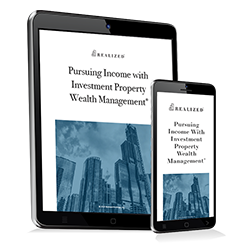
The U.S. Internal Revenue Service employs various forms to share information with taxpayers about what it knows concerning their income. One of these “form families” is a series of 1099 forms. For example, the 1099-INT reports interest income you have received, 1099-C is for canceled debts, 1099-H involves Health Coverage Tax Credit Advance Payments, and the 1099-MISC communicates miscellaneous income not classified elsewhere. The 1099-MISC is often used to report money paid to an independent contractor by a company that is not the contractor's employer. The IRS requires most of these forms to be sent by the payer by January 31 of the year after the payment was made.
1099-R Involves Retirement Account Distributions
Taxpayers will receive a Form 1099-R if they have received a distribution of at least $10 from one of these types of accounts:
- Profit-sharing or retirement plan
- IRA
- Pension, annuity, insurance contract, or survivor income benefit plan
- Permanent and total disability payment under a life insurance contract
- Charitable gift annuity
Many 1099-R Distributions Are Taxable
Often, when a taxpayer contributes to a retirement plan (or the employer does so on their behalf), the funds directed to the account are not taxed. Instead, the contributions are tax-deferred, which is one way that individuals are encouraged to divert part of their income to a retirement account. For example, if you have a salary of $100,000 annually, you may have a tax rate of 20 percent. However, if you contribute five percent of your income to your 401(k) account, that money is directed to the account on a pre-tax basis. In addition, your employer may match some or all of your contribution, and you don't pay taxes on that amount. As a result, you effectively have $10,000 in untaxed income going to the 401(k) and potentially growing for retirement.
When you retire and begin to withdraw funds from the account, the IRS expects you will now pay taxes. One of the advantages to the taxpayer is that you may have a lower income in retirement and thus pay at a lower tax rate. Whether that is the case or not, the 1099-R will report the amount of the distribution you now owe taxes on.
Early Distributions Are Taxed and Potentially Penalized
In some circumstances, a distribution from a retirement plan may be taxed, and the investor may be penalized as well. For example, suppose a taxpayer takes an early distribution (any withdrawal or loan default before the individual reaches age 59 ½). In that case, they must pay the taxes due plus ten percent of the amount withdrawn. The purpose of this hefty levy is to discourage people from using these funds for other than the intended purpose. Therefore, the 1099-R would include the tax and penalty associated with the distribution.
Suppose a plan participant has a loan against their retirement plan (usually a 401(k) but not always) and either does not make the loan payments as agreed or terminates plan participation (perhaps due to changing employers). In that case, the early distribution would be reported on a 1099-R, with a distribution code L. This distribution would be taxable and likely penalized as well.
Properly Handled Rollovers are not Taxed but Will Receive the 1099-R
When plan participants change jobs or make other changes, they may need to move funds from one account to another. The simplest way to do this is by a direct rollover, which is reported by a Form 1099-R with a G or H distribution code. A direct rollover doesn’t have a tax implication, but an indirect action can. If the participant takes possession of the funds during the rollover, they will typically receive funds minus the twenty percent tax withholding. However, to ensure that they don't trigger a withdrawal, the saver must add those funds back into the account when they complete the rollover, which must take place within sixty days of the receipt.
This material is for general information and educational purposes only. Information is based on data gathered from what we believe are reliable sources. It is not guaranteed as to accuracy, does not purport to be complete and is not intended to be used as a primary basis for investment decisions.
Realized does not provide tax or legal advice. This material is not a substitute for seeking the advice of a qualified professional for your individual situation.
Examples are hypothetical and for illustrative purposes only. Withdrawal strategies should take into account the investment objectives, financial situation and particular needs of the individual.



